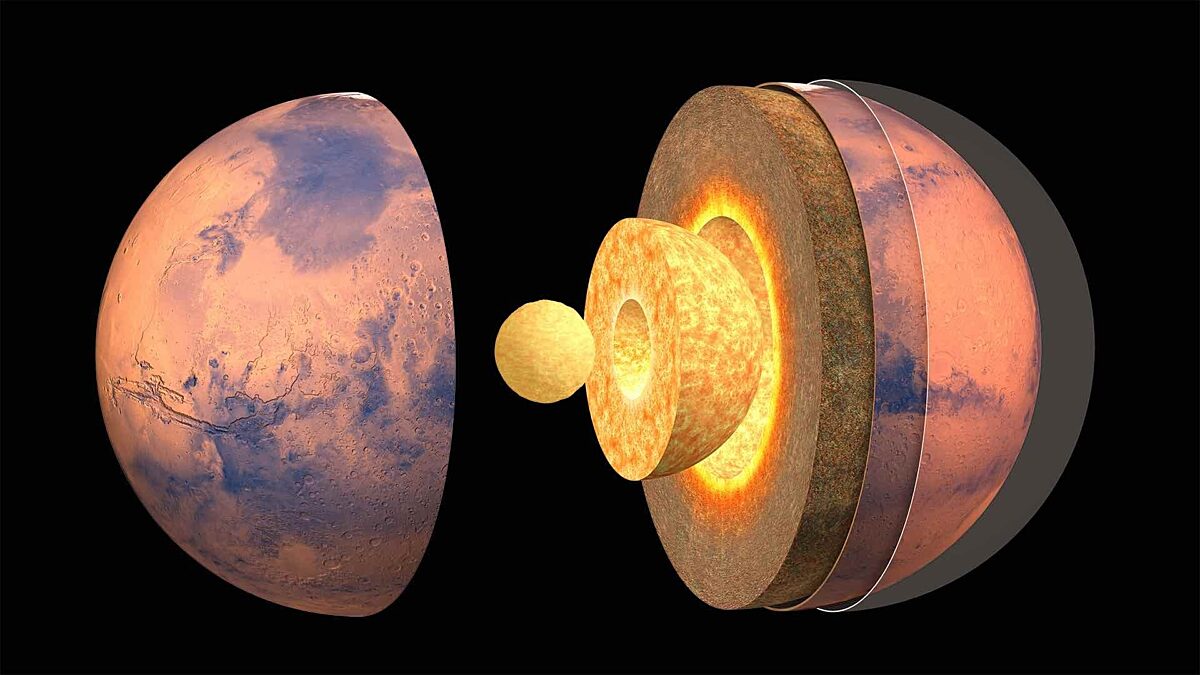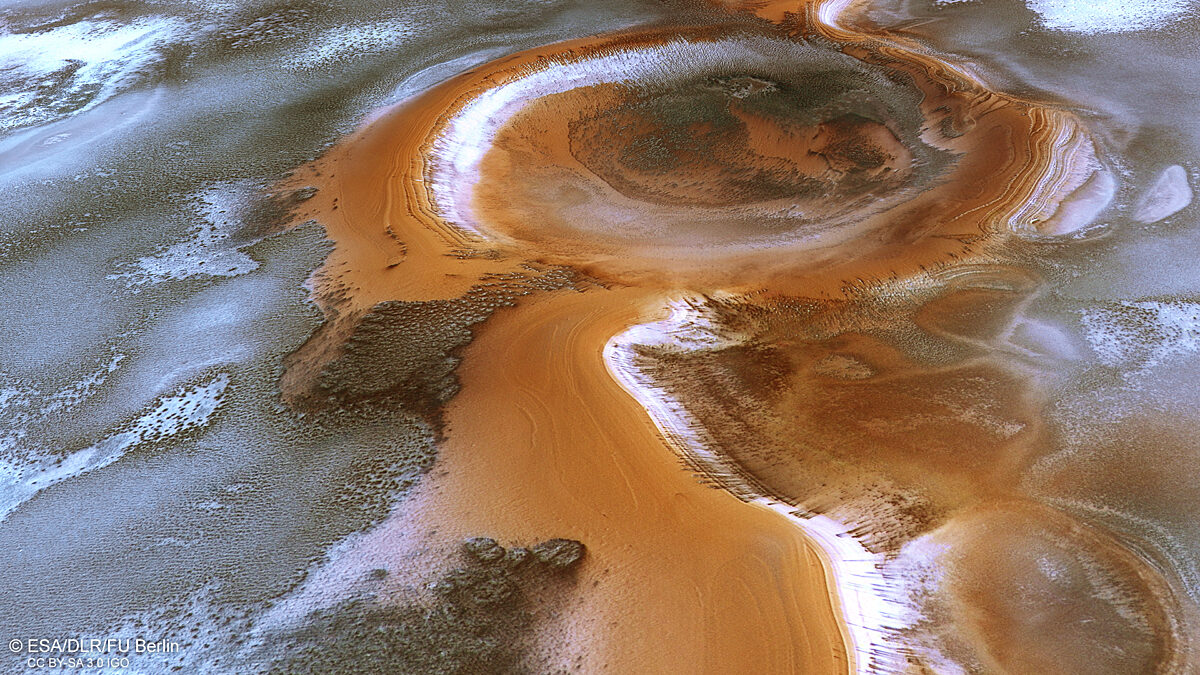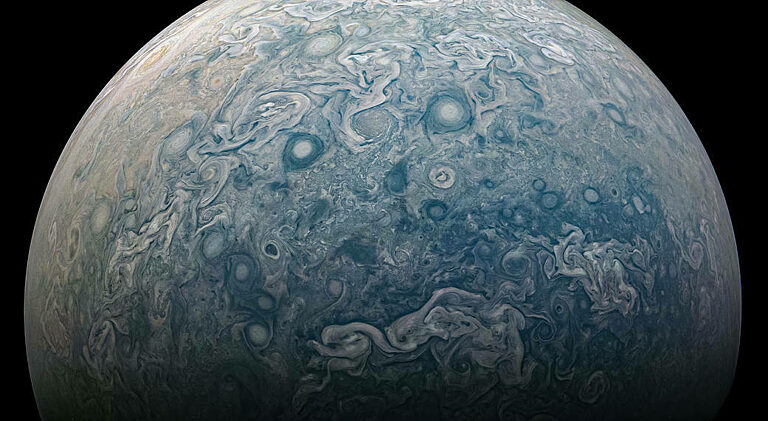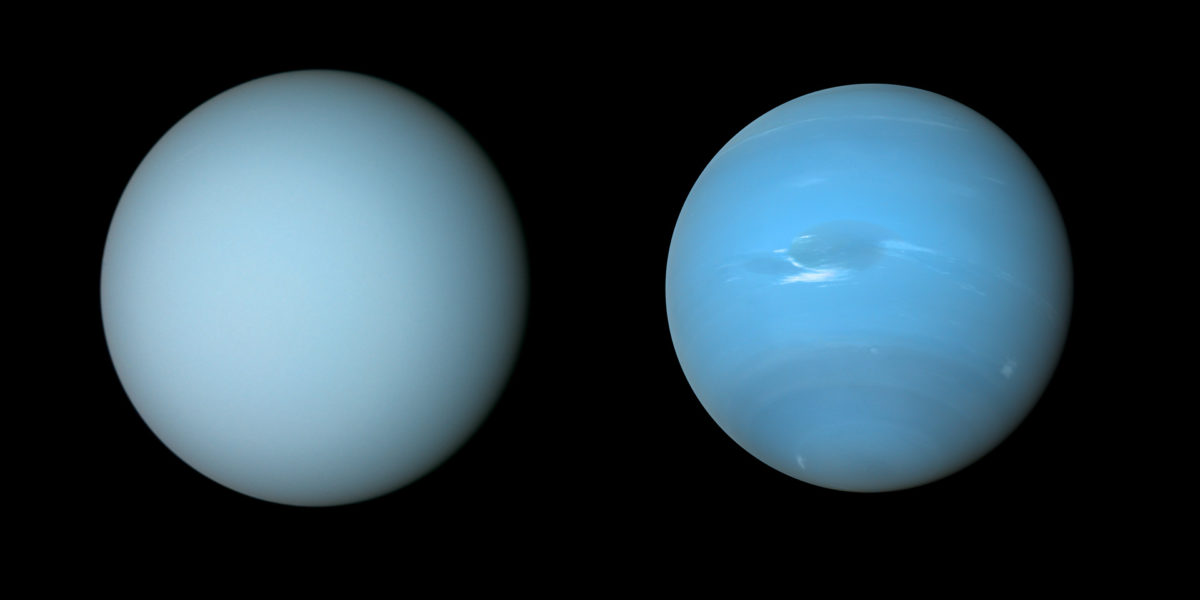Kate Howells • Apr 25, 2024
What are planets made of?
The planets in our Solar System are spectacularly diverse, from Earth’s ocean-covered surface to mighty Jupiter’s swirling storms and Neptune’s mysterious blue hues. Some planets are more similar than others, and share common structures. When you look at what planets are made of, you get three main groups: terrestrial planets, gas giants, and ice giants.
Terrestrial planets
Our Solar System’s terrestrial planets are Mercury, Venus, Earth, and Mars. The word “terrestrial” comes from the Latin “terra,” which means Earth. Terrestrial planets are primarily made of rocky material and have solid surfaces. Their main layers are the core, mantle, crust, and atmosphere.

Terrestrial planets in our Solar System have cores made mostly of iron, often with a mixture of nickel and sulfur. Earth has a molten outer core that creates a magnetic field. Mars, which was once much more Earth-like, lost its internally driven magnetic field 3 to 4 billion years ago when its core solidified.
Between the core and the crust, terrestrial planets have a mantle made of silicate minerals containing iron and magnesium. The mantle is viscous in some cases, allowing it to flow under the crust and create tectonic and volcanic activity. The terrestrial planets differ in how much of that activity continues today. Earth still has earthquakes and volcanic eruptions today, whereas Venus, Mars, and Mercury are less active.
The outermost layer of terrestrial planets is a hard crust made of lighter silicates like basalt and granite. On Earth, the crust may lie underwater or beneath soil, sand, or other loose material. On other terrestrial planets, this loose outer material is called regolith.

The terrestrial planets all have at least some atmosphere except Mercury, which only has a much thinner exosphere. Mars’ atmosphere is very thin, made mostly of carbon dioxide. Earth’s is rich in nitrogen and oxygen, helping life thrive. Venus’ thick carbon dioxide atmosphere is responsible for the planet’s greenhouse effect and searing temperatures.
Gas giants
Jupiter and Saturn are the Solar System’s gas giants. They are both made mostly of hydrogen and helium, with smaller amounts of other gases and ices. Their main layers are the core, a deep atmosphere, and an outer atmosphere.
Both Jupiter and Saturn are thought to have small, rocky and metallic cores surrounded by layers of metallic hydrogen, which might be mixed with rockier material. NASA’s Juno spacecraft is currently in orbit around Jupiter, attempting to understand what’s happening deep inside the planet, among other things. Although Juno can’t observe Jupiter’s core directly, the spacecraft has provided scientists with evidence that the planet’s core is larger and “fuzzier” than previously thought. Researchers now hypothesize Jupiter has a diluted core rather than a solid, compact center.
Surrounding the core, gas giants have a layer of atmosphere made primarily of hydrogen and helium. Because this deep atmosphere has so much gas above it, the pressure and temperature are so high that hydrogen becomes metallic and electrically conductive.
The visible outer layers of Jupiter and Saturn are made of hydrogen and helium, along with ammonia, methane, water vapor, and other compounds that form clouds and storm systems.

Ice giants
Uranus and Neptune are known as ice giants. This name comes from the fact that both planets are mostly made of things that form ices, such as water, ammonia, and methane. Although the ice giants have not been studied as extensively as the gas giants or terrestrial planets, we still have an idea of what their cores, mantles, and atmospheres are made of.

Ice giants likely have cores of rock and metal similar to those of the gas giants. Beyond that lie oceans of water, ammonia, and methane, squeezed by intense pressures into semi-solid states. Electric currents flowing through their icy-hot oceans may be responsible for powering the ice giants’ magnetic fields.
Like Jupiter and Saturn, the ice giants’ atmospheres consist mostly of hydrogen and helium, with the addition of water and ammonia as well as methane that absorbs red light, giving them their deep blue hues. The only actual ices in ice giants are found in clouds in their upper atmospheres.
Exoplanets
When it comes to composition, planets outside our Solar System may follow the same general groupings as our home planets. Exoplanet surveys have found rocky worlds similar to the terrestrial planets, as well as gas giants and ice giants like those we know here (though sometimes in exotic locations). There are also exoplanets that may have surfaces covered entirely by water, perhaps representing a whole new category of planetary composition.
The more we discover about the worlds in our Solar System and beyond, the better we understand the mechanics of the Universe. And by searching for worlds in other star systems, we may even someday find one that has a feature we’ve only seen once: life.
Let’s Go Beyond The Horizon
Every success in space exploration is the result of the community of space enthusiasts, like you, who believe it is important. You can help usher in the next great era of space exploration with your gift today.
Donate Today

 Explore Worlds
Explore Worlds Find Life
Find Life Defend Earth
Defend Earth


